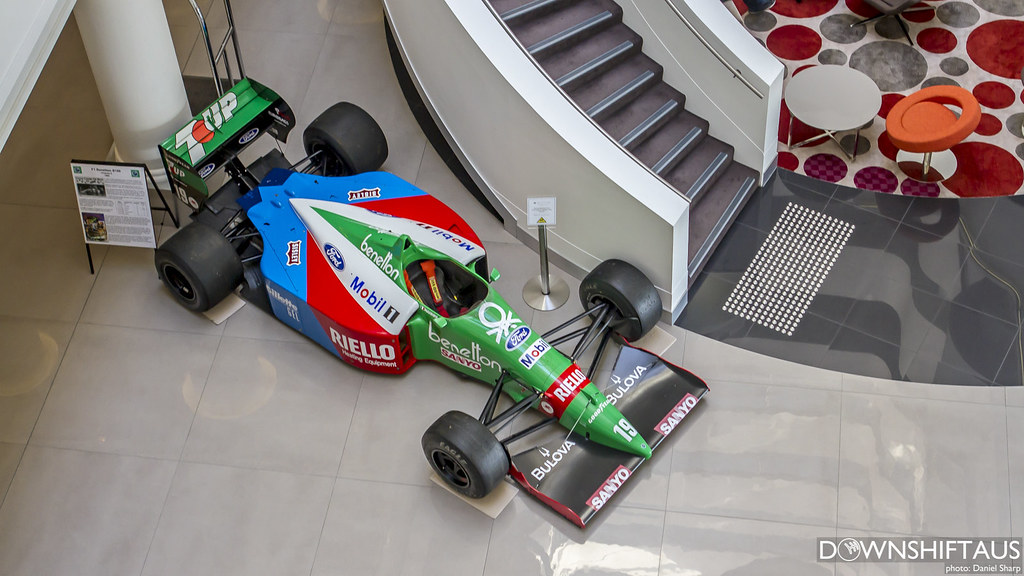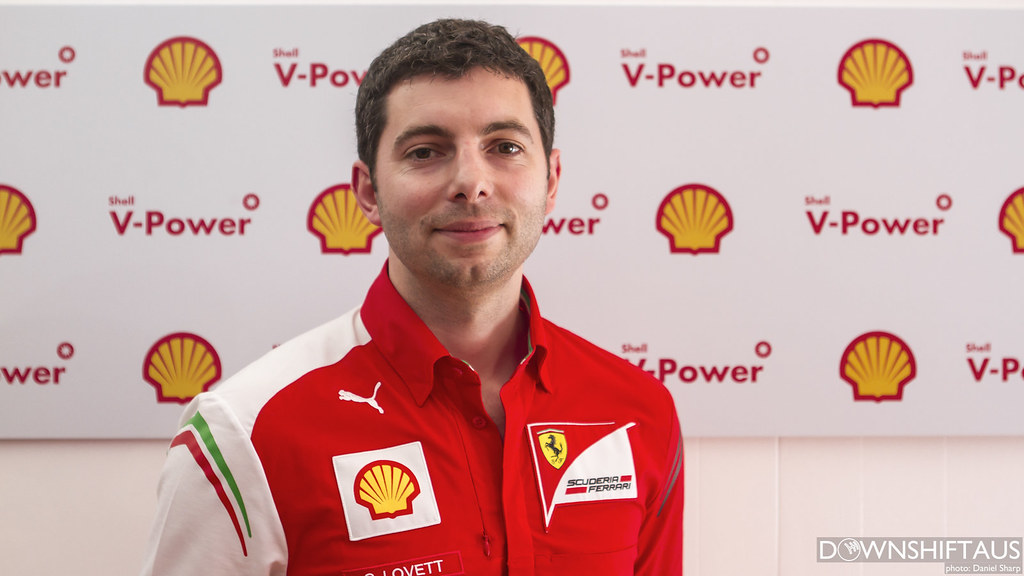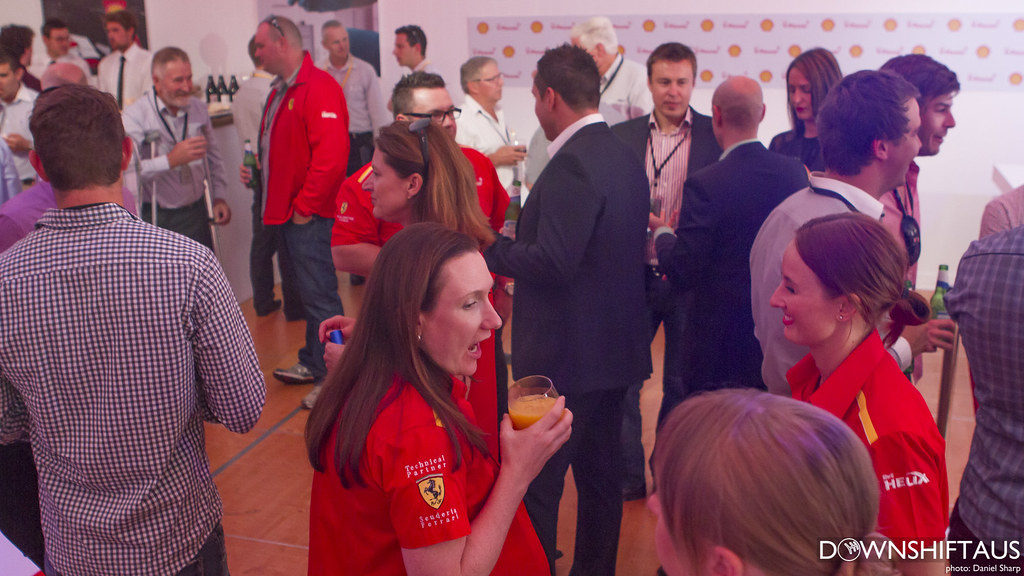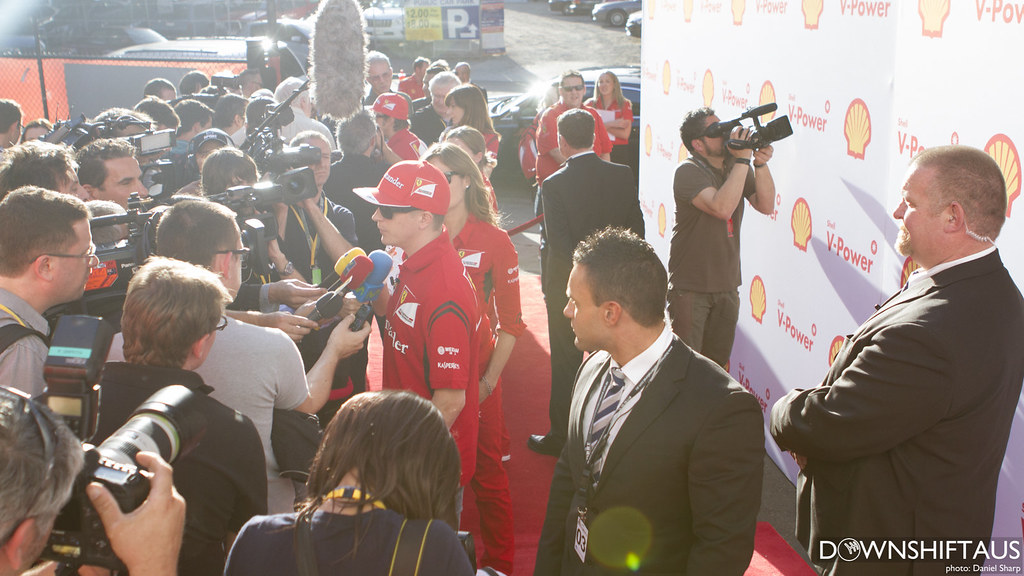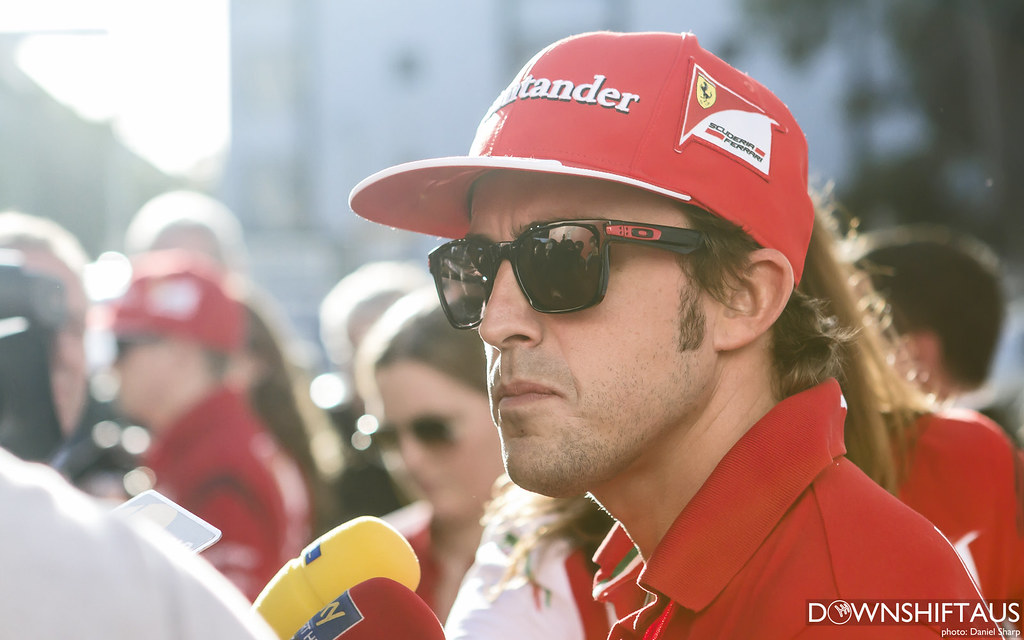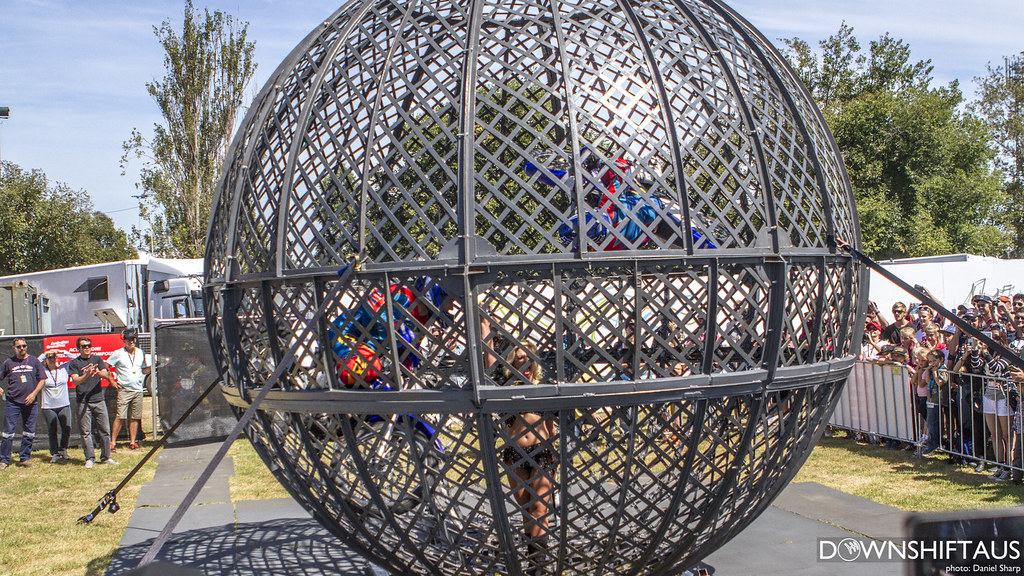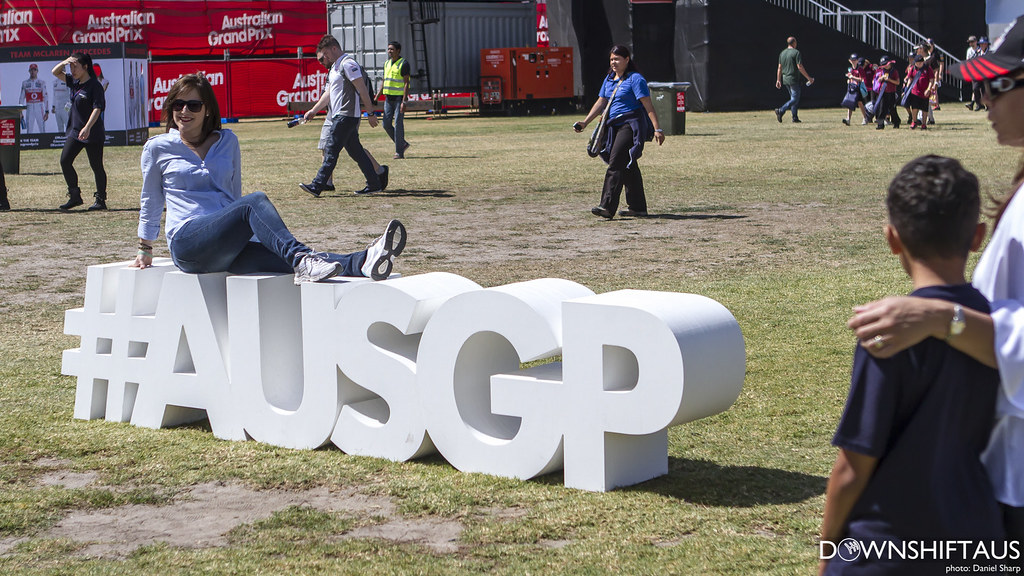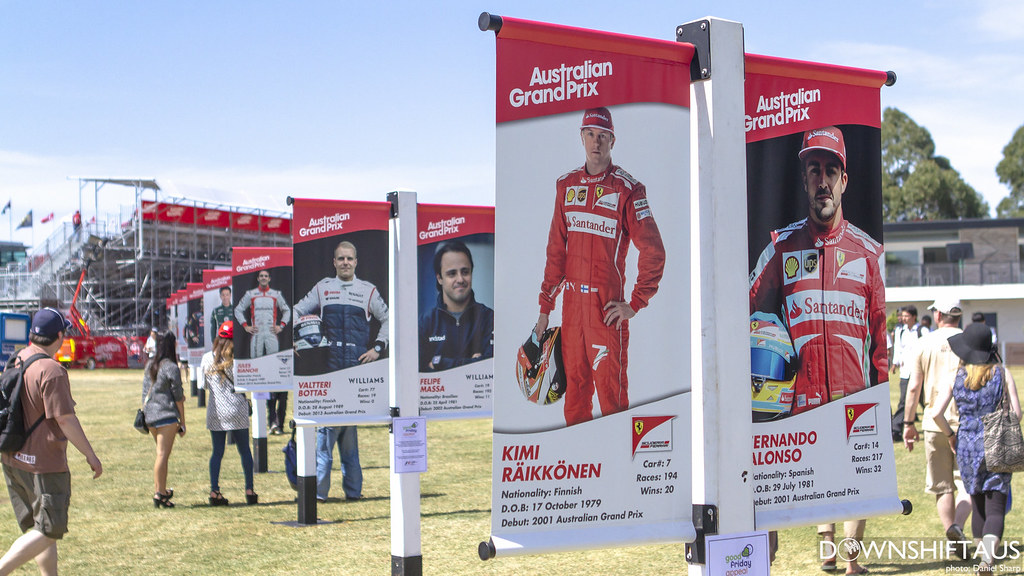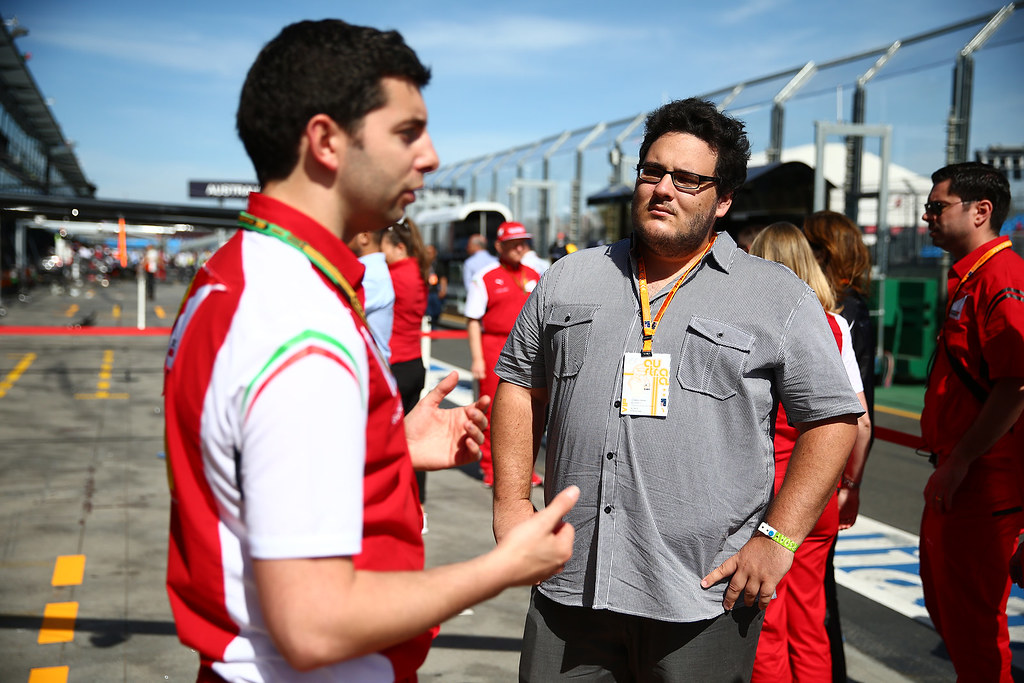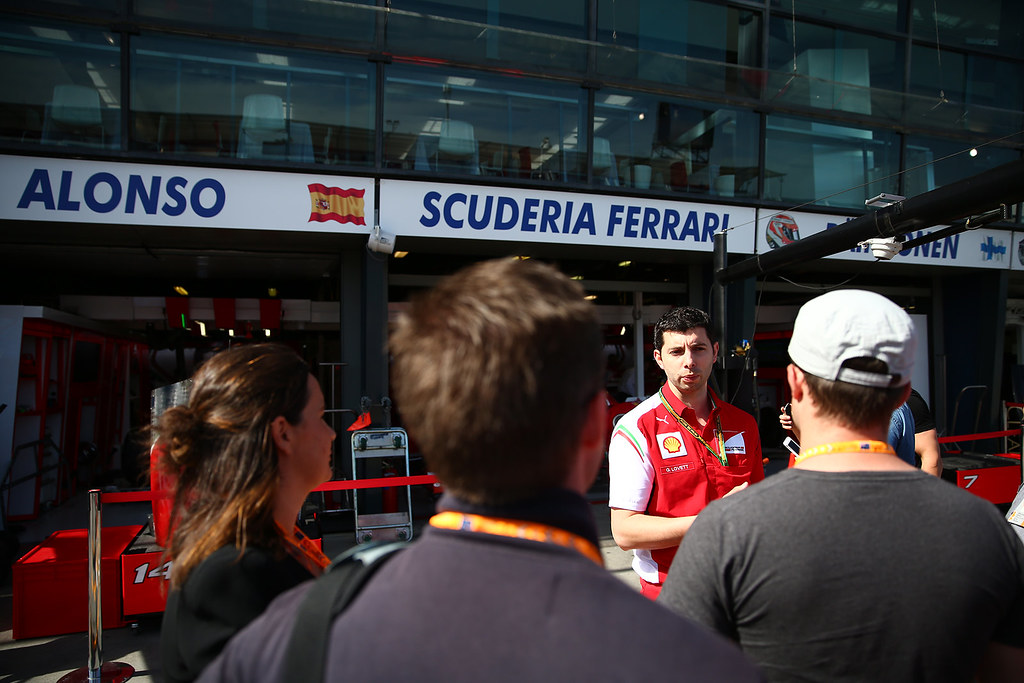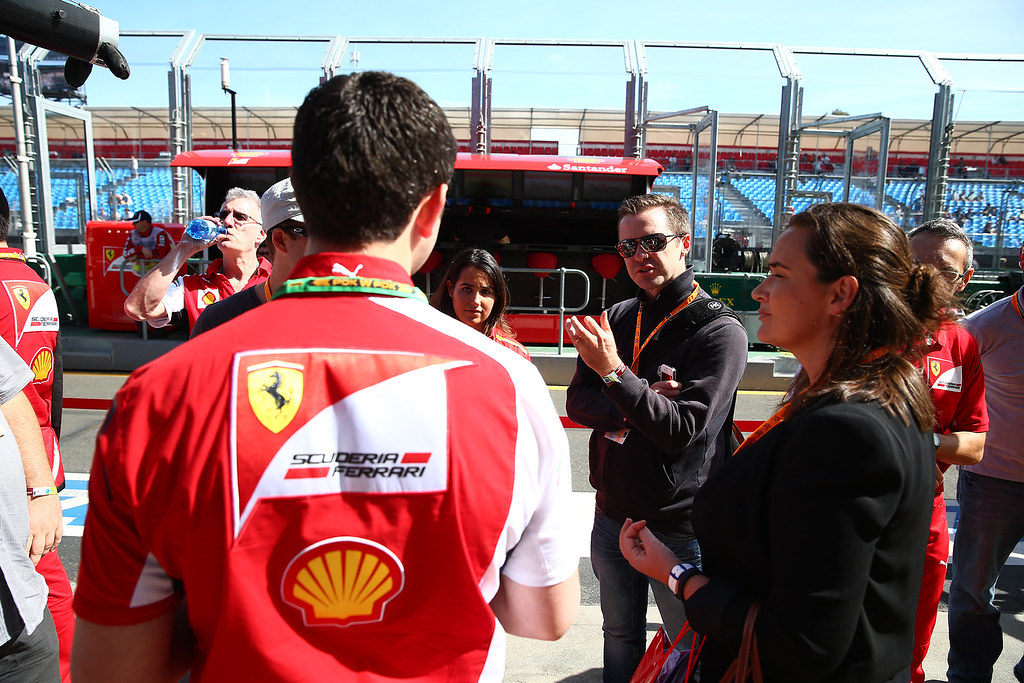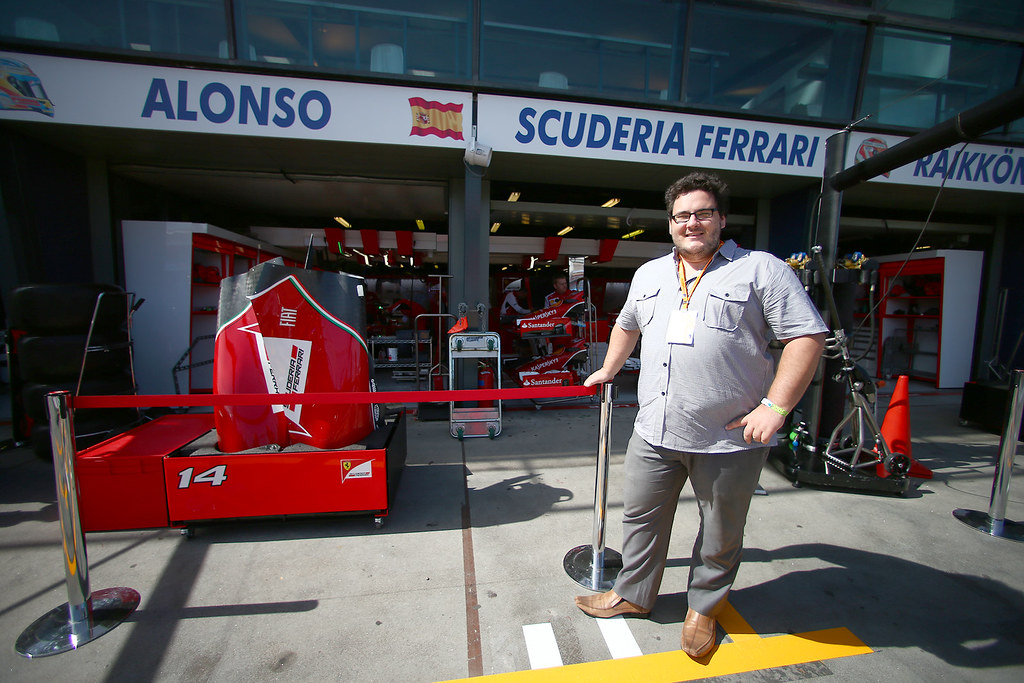Last Tuesday DS received an email asking if we wanted to cover the Melbourne premiere of Shell and Ferrari’s new documentary, “Horse Power”.
“Absolutely!” I thought. When is it? Oh… Tomorrow…
I immediately began packing my bags.
Upon arriving at my hotel on the Wednesday right across the road from Albert Park, I knew I was in the right place. Sitting pretty in the foyer was a 1989 Benetton F1 car.
A quick change of clothes and I was off to the World Premiere of “Horse Power”
‘Horse Power’ is a joint documentary between Shell and Ferrari showing the lead up to the 2014 Formula 1 season. It was an extremely eye opening look deep into Ferrari and Shell’s tech labs and processes that are largely previously unseen.
On hand was Guy Lovett. Shell’s Technical Manager for Ferrari’s F1 team, amongst other things.
After the documentary Guy answered a few questions:
Q: Is the V Power fuel completely different coming into this season?
Guy: It’s a very different fuel compared to last year in the details. The rules in F1 dictate that the fuels we’re using with Ferrari have to be very similar to those that are available at the pump and the everyday customer, which is great to be able to transfer that technology. The fuels are different, but we didn’t have to start from scratch. We had years of experience on which to build and integrate towards the optimum solution for the V6.
Q: How different is the V6 appetite for fuel compared to the 2.4L V8?
Guy: It’s not a surprise that a downsized, highly boosted engine is a lot more responsive to octane. That and the new rules of 100kg fuel maximum allowed for the entire race do not compliment one another. Typically a component that is good for octane is not good for energy content, so we’ve had to be very innovative bringing performance in its entirety to Ferrari.
Q: We’re now dropping from 8 engines or ‘Power Units’ to 5 this year. What does that mean in real terms?
Guy: A big problem to be honest, because not only are these power units all new and relatively unproven, we have only had 12 days of track testing and they have to last almost double the distance. It’s almost unimaginable to have to design these things. This aspect has probably been the most difficult one for our oil formulators to cope with really. The fact that we’ve got to not compromise performance, because well, we can’t do that, but we have to maximise durability to ensure the power units last almost double the distance of their predecessors.
Q: Can you describe the environment that Shell’s oils and lubricants will be experiencing with the new turbo setups?
Guy: Probably the most extreme that you can imagine. Somewhere in the region of 1000 degrees centigrade and the turbo rotating up to 125,000rpm so almost 10 times that of the engine itself, so being able to have a lubricant that survives under those conditions is not simple. A lubricant that reduces friction, but also enables performance elsewhere in the engine, well that’s pretty tough.
Q: Albert Park is one of the most thirsty tracks on the calendar regarding fuel efficiency. What can we expect from this race? Is it going to be very tough just to get the cars to the end of the race?
Guy: Honestly I don’t know, and that is the exciting part of it. The Formula One part of me is incredibly excited for what’s going to happen. The Shell Technology Manager inside me is a little bit worried and nervous as so much can happen. The fuel regulations about only having 100kg fuel to last the whole race. That’s, on average, 30% less fuel than the cars took on last year. Melbourne is an extreme track and is extremely thirsty on fuel. So there is probably more than 30% to start the year, and to have had only 12 days of testing, anything can happen.
Afterwards it was time to head back outside for some food and drink, and to admire the F1 on display.
Soon enough we had an announcement that Ferrari Drivers, Kimi Räikkönen and Fernando Alonso were arriving and the media were ushered outside for their appearance.
I’ve never been part of a media circus before and it was an intense experience. Cameras, both for pictures and video being pressed in every available spot, voice recorders at the ready.
Kimi.
Fernando.
Both drivers were asked a series of questions also.
Q: Kimi, you have experienced V10 engines, V8 nNaturally aspirated engines. How do these V6 turbo powertrains compare to everything that has come before?
Kimi: They are a bit different because there is a lot more torque in the engine, but apart from that we have managed to set up the systems pretty well. So our abilities are pretty good now. Obviously it was a bit tricky to begin with, but we are now very good with the improvements and we are running well so we are getting used to it, and they are a little less noisy and have one more gear, but it doesn’t change the way we drive it. We’ll get used to it quickly and the normal runnings are still quite similar so not an awful lot different on that side. The people that build the engines have had a very big run.
Q: Fernando, you’ve completed the second highest amount of miles in the Winter testing. How do you assess the pecking order now?
Fernando: I think it’s impossible to say to be honest. Winter testing is extremely difficult to pick out who are the favourites and this year is even more complicated with all the systems and tools we have available. But we will concentrate on our own work, we have been facing some troubles on some days. Some days were OK, and we completed a good number of laps and here is going to be very busy and we will face some strong competition. We are here to compete and what we do from here to November produces some good results.
Q: Kimi, Do you think it’s going to be the same teams winning races this year as last year or do you think we’ll see some changes on the top step of the podium?
Kimi: It’s difficult to say. We only know only what we have done. As Fernando said we have had our good days and our bad days and it is the same for everybody with the new regulations. We will just have to see what happens. It’s more open for sure this year and more difficult. Hopefully we are up there and can be strong with our results.
The next day I was woken up by the two seater F1 car flying past my hotel, a mere 50m across the road. Getting ready, I could see the V8 Supercars testing and I hurried downstairs and across the road. Just in time to see the Mazda 3s.
I had to make my way across Albert Park to Gate 1 to meet Katie from Shell. On the way I got to see a couple of the side attractions on at F1.
The globe of death!
Whilst the Roulettes performed in the sky.
I think it was ten years ago I first heard of ARMYGEDDON, the Army’s beastly project car, so it was crazy seeing it in the flesh.
As well as their Project Digger.
We headed across the field towards the F1 Paddock…
…before meeting up with Pete from CarsGuide and Ash from SAU.
Picture – Getty images
From here we got a tour of the Ferrari pits and Tech Centre. This large ‘box’ painted in Ferrari Red, where they have all their sampling machines and testing arrangements. As we know it is crucial to make sure they’re meeting all regulations as well as getting the most out of their engines. I got to ask Guy a question of my own on the day.
Daniel: In the documentary you mentioned that the fuels in the bowsers for general public are 99% the same as those that you use in Formula 1. Is there a big difference in the octane ratings, are you allowed to tell us what the octane rating are? You did mention that the new engines were very octane hungry.
Guy: The motors are much more octane hungry than the V8s.
The rules allow us to turn the dials on a few things to work with the specific application that is the high performance F1 motors. It’s actually more difficult for us to design a fuel to work for all consumers across many different engine types, ages, wear types and so on.
I can’t tell you what octane the fuels are in the F1, but what I can say is that there is a minimum octane rating of 87 in the rules, but we are above 100. To give you a flavour of where we’re at: it’s not a million miles from where the street fuels are at, but we can try different compounds that are not necessarily viable for public consumption, but in the future they might be. We just have more of an allowance to tweak certain aspects of the fuel for the F1 application.
Photo – Getty images
The F1 cars were in the background, fenders in foam boxes, technicians checking every last detail before the weekend’s racing.
Photo – Getty images
Photo – Getty images
It was an incredibly eye opening couple of days and I had an absolute ball. I will get to an actual F1 RACE itself one day. Thanks very much to Shell and Ferrari for an incredible experience!
Photo – Getty images

